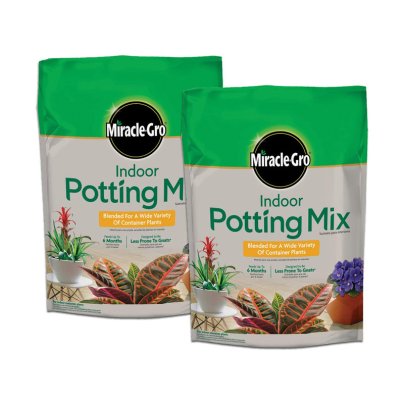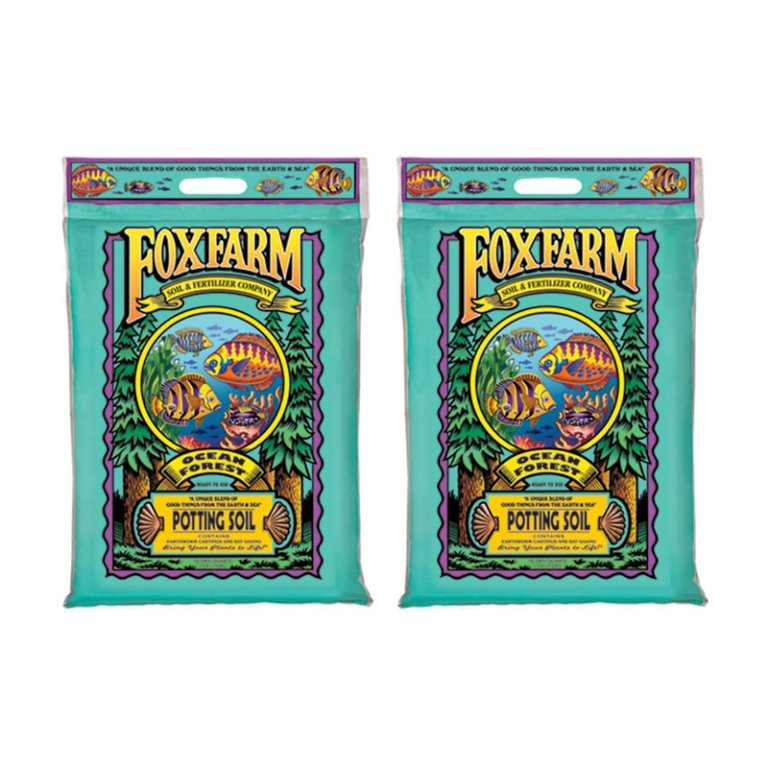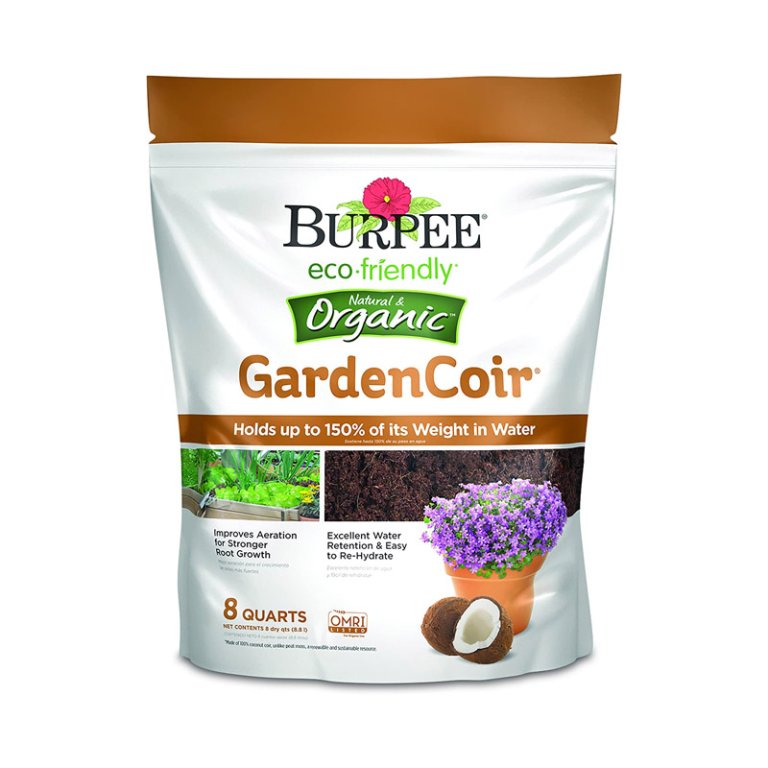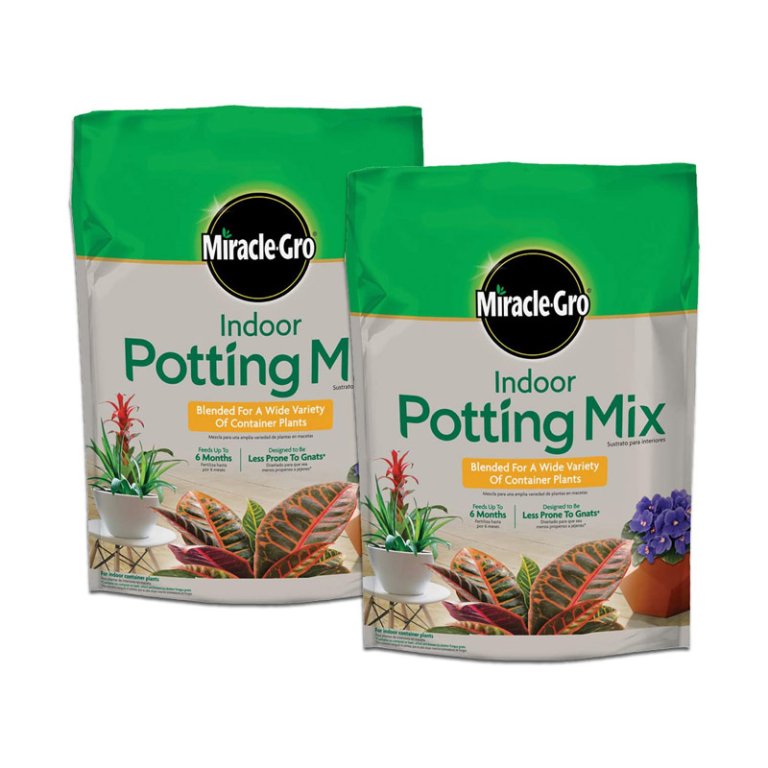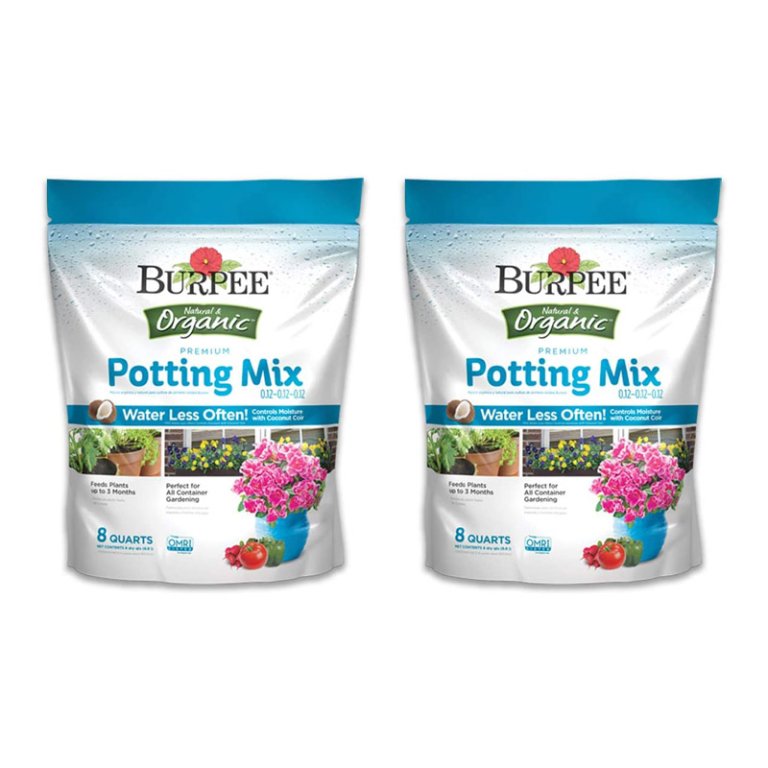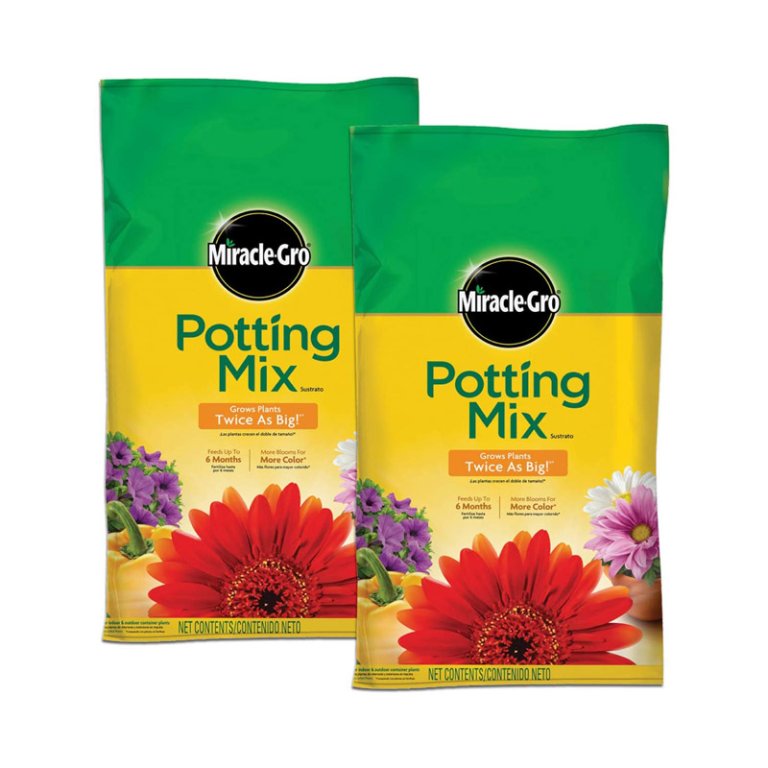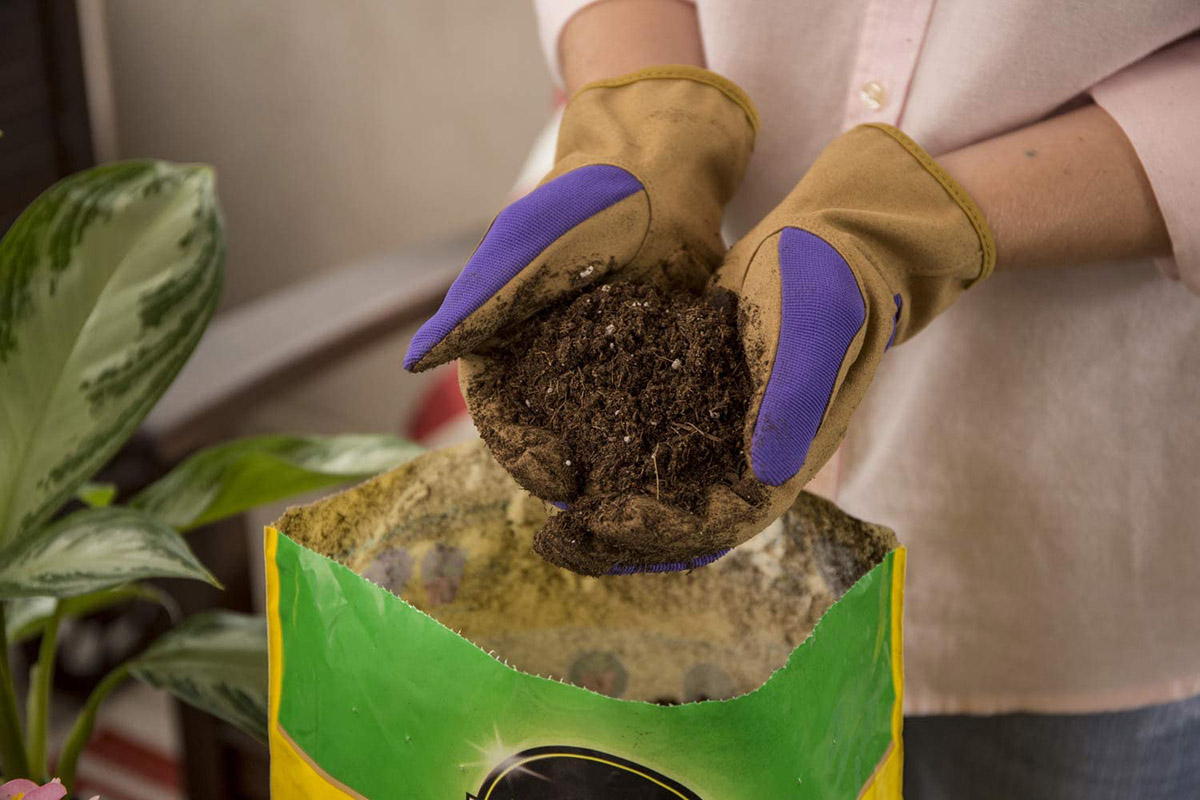
We may earn revenue from the products available on this page and participate in affiliate programs. Learn More ›
Sometimes called the “Swiss cheese plant,” due to the holes in its leaves, Monstera deliciosa is a popular house plant that adds a lush, natural touch to any room. Native to South America, where it can vine and climb up to 30 feet in height, this tropical plant species is grown extensively as a houseplant in colder climates and trimmed to retain a more compact form. In southern growing zones 10 and 11, where the winter temps do not dip below freezing, a Monstera plant can be grown outdoors as a hardy perennial.
With its thick, shiny leaves, this lush plant prefers a potting soil that mimics the natural soil found in tropical and subtropical regions. The best soil for a Monstera plant is one that offers optimal growing conditions for the plant’s roots to spread out and seek nutrients.
Each of the top picks below was selected after an in-depth review of the market and thorough product vetting. Ahead, learn what type of soil is best suited to the Monstera plant and discover the available potting mixes that are ideal for this attractive plant, indoors and out.
- BEST OVERALL: Foxfarm FX14053 Ocean Forest Garden Potting Soil
- RUNNER-UP: Burpee Natural & Organic GardenCoir, 8 Quart
- BEST BANG FOR THE BUCK: Miracle-Gro Indoor Potting Mix 6 qt., 2 Pack
- BEST ORGANIC: Burpee Organic Premium Potting Mix, 8 Quart, 2 Pack
- ALSO CONSIDER: Miracle-Gro Potting Mix , 8 qt. (2 Pack)
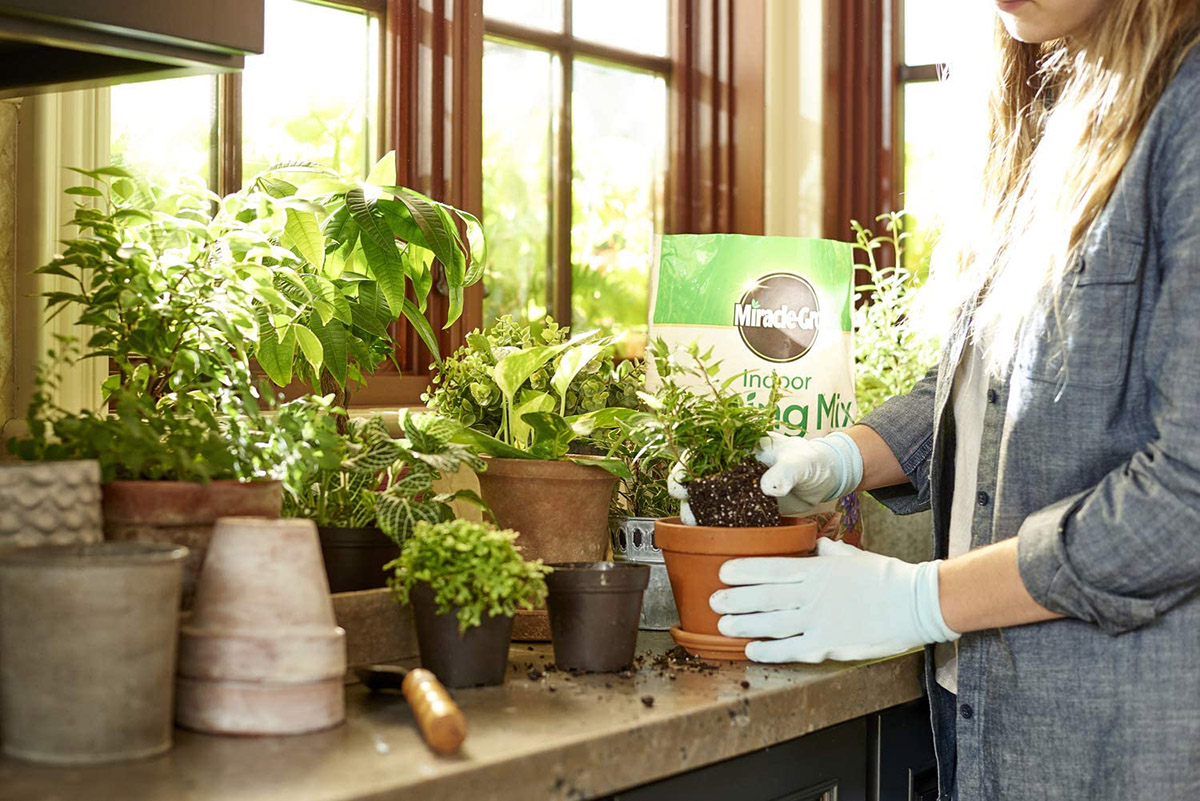
What to Consider When Choosing the Best Soil for Monstera
Monstera plants thrive in indirect light, such as in front of a north window or under a covered porch. They shouldn’t be overwatered; once every 10 to 14 days is sufficient, while allowing the top 2 or 3 inches of soil to dry out before watering again.
When growing houseplants in containers, avoid soil from the ground outdoors, which may contain pathogens or insects that can lead to plant diseases or a bug infestation. Also, outdoor soil is usually compact, making it difficult for the plant’s roots to fully develop. Consider the following before choosing a potting soil for a Monstera plant.
Organic vs. Non-Organic
The base ingredients in many potting soils are natural, but they are not organic if the sterilization process uses chemicals or any other component not considered organic. Organic ways of processing potting soil to destroy pathogens may include dry heat or steaming, while inorganic methods might consist of radiation or chemicals, such as mercuric chloride.
The addition of chemical fertilizers may also make a product non-organic. The current trend is toward more natural and organic products, so many potting mix manufacturers today use a high percentage of natural ingredients in their products.
Ingredients
Potting mixes often contain a combination of sphagnum peat moss, pine needles, coconut coir, perlite, and vermiculite. Each has its benefits when growing Monstera plants.
- Sphagnum peat moss: Harvested from peat bogs where it grows naturally, peat moss is valued for its water-retentive properties and is found in many potting mixes.
- Coconut coir: Once considered a waste product, coco coir is the fibrous layer surrounding a hard coconut shell. It retains moisture without compacting. Coco coir offers an optimal growing medium even without the addition of other ingredients.
- Pine bark fines: Gathered from fir, cedar, pine, and spruce trees, these needles and small bits of tree bark permit air to circulate through the mix, which is essential for root growth.
- Perlite: The result of volcanic rock heated to extreme temperatures, perlite looks and feels like Styrofoam pellets. It helps oxygen filter through the mix, and it quickly absorbs and retains moisture.
- Vermiculite: Similar in texture to perlite, vermiculite is mined from silica deposits and it helps prevent the growing mix from becoming compact.
- Other natural ingredients: Potting soil manufacturers regularly add additional natural ingredients to their mixes that include things such as composted leaves, fine sand, and silt to boost the texture and nutrient value of the mix.
- Wetting agent: Some dry growing mixes resist absorbing water initially, but once they’re moistened, they readily absorb and retain moisture. To make the initial absorption easier, manufacturers may add a wetting agent, such as powdered kelp (a surfactant), that helps the mix absorb water the first time.
Nutrients
In tropical regions, soil is naturally nutrient-rich, having been the recipient of continuous feeding by biodegrading plants, the droppings of forest animals, and aeration by earthworms. However, during processing to destroy pathogens in potting soil, nutrients are often lost. Manufacturers may opt to replace them by adding trace minerals, such as boron or magnesium, or by adding dried earthworm castings to the mix. Some potting mixes come without any added nutrients, which leaves buyers free to choose their own type of fertilizer.
Aeration
Aeration refers to providing air in the soil, and it’s as important to houseplants as it is to the lawn and garden. It’s key when growing Monstera specifically, because this plant doesn’t like “wet feet”—meaning it won’t thrive if sitting in water. When water floods a potted plant, it pushes oxygen out, and a lack of oxygen can cause Monstera leaves to turn yellow and drop. This is where ingredients, such as coco coir, perlite, and vermiculite, can help the growing mix by keeping it light and lofty, and well-aerated. These ingredients allow water to drain through the mix and out quickly, which prevents the wet feet scenario.
It’s also essential for Monstera to be planted in a pot or planter that has drain holes. Even a well-draining growing medium can’t protect a plant from wet feet if the pot has no drain holes.
Moisture Retention
It may seem odd that an optimal soil for Monstera plants needs both good aeration and the ability to retain moisture. However, the two qualities don’t really cancel each other out. Moisture retention doesn’t mean sogginess; it means ingredients in the grow mix will remain damp after the water has drained away. Monstera benefits from watering approximately every 10 to 14 days.
When watering, pour in water until it just begins to come out of the pot’s drain holes—that’s sufficient until the next watering.
Perlite is a top performer for moisture retention and aeration. The tiny beads soak up the water and hold it, slowly releasing it as the growing medium dries out, so plant roots still have access to moisture in an aerated mix. At the same time, perlite beads create spaces in the growing medium so excess water drains away.
pH Levels
Like many houseplants and garden plants, Monstera prefers soil that is slightly on the acidic side. Fortunately, most of the ingredients used to create potting mixes are somewhat acidic as well. The pH level of a growing medium is determined by whether the mixture is more or less acidic. The pH scale ranges from 0 to 14, and 7 on the scale is considered neutral. Any reading below 7 is acidic, and any reading above is alkaline. Monstera plants do best in a growing medium with a pH level that ranges from between 5.0 to 6.8.
Not all manufacturers test the pH of their growing mixes, but ingredients such as peat moss (with a pH level of about 4.5), coco coir (pH level of 5.2-6.8), and pine bark (pH of about 5.0), all help create a slightly acidic growing environment.
Fungal Growth
Another downside of soggy soils is the increased risk of fungal growth, which can lead to root rot and the death of the plant. A well-aerated, well-drained, moisture-retentive growing mix, combined with taking care not to overwater, is the best plan for preventing fungal growth in a Monstera plant. Plants that are grown outdoors are less likely to develop fungal diseases since they’ll get the benefit of drying breezes through their foliage. When growing Monstera indoors, open a window occasionally or turn a gentle fan on low to produce desirable air circulation through the leaves.
Our Top Picks
To qualify as a top pick, the growing medium should offer a formulation that encourages Monstera plant health. It should contain ingredients that drain well yet retain enough moisture for the plant to thrive. It may or may not contain fertilizers, because growers can add them separately if desired. Any one of the following growing mediums will provide an optimal environment for growing a Monstera plant.
Best Overall
Foxfarm FX14053 Ocean Forest Garden Potting Soil
Pros
- Light and aerated texture
- Encourages strong root development
- pH level from 6.3 to 6.8
Cons
- Can retain too much moisture
- pH levels may be incorrect
Product Specs
- Type: Potting soil
- Ingredients: phagnum peat moss, forest humus, fine sand, earthworm castings, fish and crab meal, bat guano
- Quantity: 12 quarts
Containing a blend of sphagnum peat moss, forest humus (decomposed organic matter), and fine sand, Foxfarm Ocean Forest Garden Potting Soil has a light, aerated texture for strong root development. The mix ranges in pH level from 6.3 to 6.8, making it well suited for growing Monstera plants. Foxfarm has also added natural nutrients, including earthworm castings, fish and crab meal, and bat guano, to encourage healthy plant growth. The growing medium is suitable for use in both indoor and outdoor pots. It comes in a 12-quart bag, and buyers will receive two bags. Additional quantities may be available.
Get the Foxfarm Ocean Forest potting soil at Amazon, Walmart, and Lowe’s.
Runner-Up
Burpee Natural & Organic GardenCoir, 8-Quart
Pros
- Will not compact around roots
- Provides optimal aeration
- Contains only natural ingredients
Cons
- No added fertilizers or nutrients
Product Specs
- Type: Coconut coir
- Ingredients: Coconut coir
- Quantity: 8 quarts
Featuring lightweight coconut coir, Burpee’s Natural & Organic GardenCoir mix won’t compact around plant roots. It provides optimal aeration while retaining the vital moisture Monstera plants enjoy. GardenCoir is an organic product containing only natural ingredients and it has not been treated with chemicals during processing. While the pH value of GardenCoir isn’t listed on the package, coconut coir has a natural pH level of 5.2 to 6.8, making it optimal for growing Monstera. The growing medium contains no added fertilizers or nutrients, so growers can add their own as desired. Burpee GardenCoir comes in an 8-quart bag of dry mix.
Get the Burpee GardenCoir coconut coir on Amazon.
Best Bang for the Buck
Miracle-Gro Indoor Potting Mix 6 qt., 2 Pack
Pros
- Budget-friendly price
- Includes a wetting agent
- Has pH level between 5.5 to 6.2
Cons
- Prone to gnats
Product Specs
- Type: Potting soil mix
- Ingredients: Sphagnum peat moss, coconut coir, perlite, fertilizer
- Quantity: 12 quarts (2 packs of 6 quarts)
For a lightweight growing medium that contains fertilizer at a budget-friendly price, check out Miracle-Gro Indoor Potting Mix. This mix contains sphagnum peat moss, combined with coconut coir, perlite, and a fertilizer blend that’s well suited to growing houseplants. This Miracle-Gro mix also includes a wetting agent to make the dry product easily take on water the first time. The included fertilizer features a blend of nitrogen, phosphate, and potash to encourage strong root and leaf development. Miracle-Gro mix comes with a pH level range of 5.5 to 6.2, making it well suited to growing Monstera.
Get the Miracle-Gro indoor potting mix at Amazon, Walmart, The Home Depot, and Lowe’s.
Best Organic
Burpee Organic Premium Potting Mix, 8 Quart, 2 Pack
Pros
- No chemical ingredients
- Encourages healthy leaf and root development
- pH level about 6.5
- Enriched with plant food
Cons
- Can contain large sticks
Product Specs
- Type: Potting soil mix
- Ingredients: Coco coir, compost, perlite, fertilizer
- Quantity: 16 quarts (2 pack of 8 quarts)
With a base of coconut coir, combined with other natural ingredients, Burpee Organic Premium Potting Mix offers growers an organic medium for growing Monstera plants. No chemical ingredients or processes here—this organic mix contains only components deemed organic. In addition to the coco coir, the mix contains compost, perlite, and an organic fertilizer derived from hydrolyzed feather meal, composted poultry manure, and sulfate of potash, to encourage healthy root and leaf development. The pH level of the organic Burpee mix is about 6.5, making it well suited to growing Monstera. It’s available in an 8-quart two-pack.
Get the Burpee Organic Premium potting mix at Amazon, Walmart, and The Home Depot.
Also Consider
Miracle-Gro Potting Mix, 8 qt. (2 Pack)
Pros
- Drains well
- Offers optimal moisture retention
- Includes fertilizer
- pH levels from 4 to 6.5
Cons
- May be prone to gnats and mold
Product Specs
- Type: Potting mix for outdoor plants
- Ingredients: Sphagnum peat moss, composted bark, fertilizer
- Quantity: 8 quarts
For those living in temperate regions—or those who wish to move a Monstera plant out to the patio during summer—may want to consider Miracle-Gro Potting Mix that’s designed for outdoor plants. This mix features a base of sphagnum peat moss and composted bark from pine, spruce, hemlock, and fir trees. It drains well yet offers optimal moisture retention for outdoor growing situations where moisture can evaporate quickly.
This Miracle-Gro mix product also features a wetting agent to make moistening the mixture easier. An incorporated fertilizer contains phosphate, potassium sulfate, and ammonium nitrate to stimulate foliage growth and encourage healthy root development. The pH level ranges from 4 to 6.5, making it well suited for growing Monstera plants. The mix comes in an 8-quart bag—other sizes are also available.
Get the Miracle-Gro potting mix at Amazon, Walmart, The Home Depot, and Lowe’s.
Our Verdict
Based on ingredients, nutrients, aeration, moisture retention, and pH levels, Foxfarm Ocean Forest Garden Potting Soil is our top pick for the best soil for monstera plants.
How We Chose the Best Soils for Monstera
Our top picks for the best soil for monstera plants encourage plant health. The best soil should retain moisture but still drain well so the plant will thrive. Some of these soils contain fertilizers, but if they don’t, it’s easy to add additional fertilizer if needed. To determine the best soil for monstera plants, we focused on ingredients such as coco coir, peat moss, vermiculite, and perlite since these ingredients encourage optimal growth and root development. Additional factors include added nutrients, how well the soil drains and stays aerated, how well it retains moisture, and since monsteras like slightly acidic soil, the pH level. Our picks for the best soil for monstera plants will encourage healthy leaf and root growth while maintaining optimal moisture retention and drainage.
FAQs
A Monstera plant makes a striking addition as a houseplant or on the patio, with its large attractive leaves—but it’s a little picky about its preferred soil. Some questions are to be expected from those looking to find an optimal soil to grow this tropical beauty, and the answers are below.
Q: Is Monstera a good indoor plant?
When it comes to tropical plants, Monstera is a relatively easy keeper that will withstand even occasional dry soil, making it a great choice for many indoor situations.
Q: What is the best soil mix for Monstera?
The inclusion of one or more of the following ingredients: peat moss, pine fines, coco coir, perlite, and vermiculite are often found in an optimal growing medium.
Q: How much light does a Monstera need?
Monstera likes ample indirect light, such as being near a northern window. Avoid placing it in a hot, sunny window, which could cause the leaves to wilt.
Q: How much water does a Monstera need?
Monstera should be watered thoroughly—until water begins running out the pot’s drain holes—every 10 to 14 days. Don’t overwater.
Q: When should a Monstera plant be repotted?
Monsteras may need repotting as often as every 2 years if they’re quick growing. When the soil doesn’t hold as much water as it once did (you’ll notice that more runs out of the drain holes), or if a root grows out a drain hole, consider repotting to a larger container.
Q: What causes a Monstera plant to droop after repotting?
Repotting is naturally stressful to the plant, and some growers tend to overwater after repotting, which can exacerbate the problem. Make sure the plant is not in direct light and don’t water too much. In a few weeks, it should perk back up.


